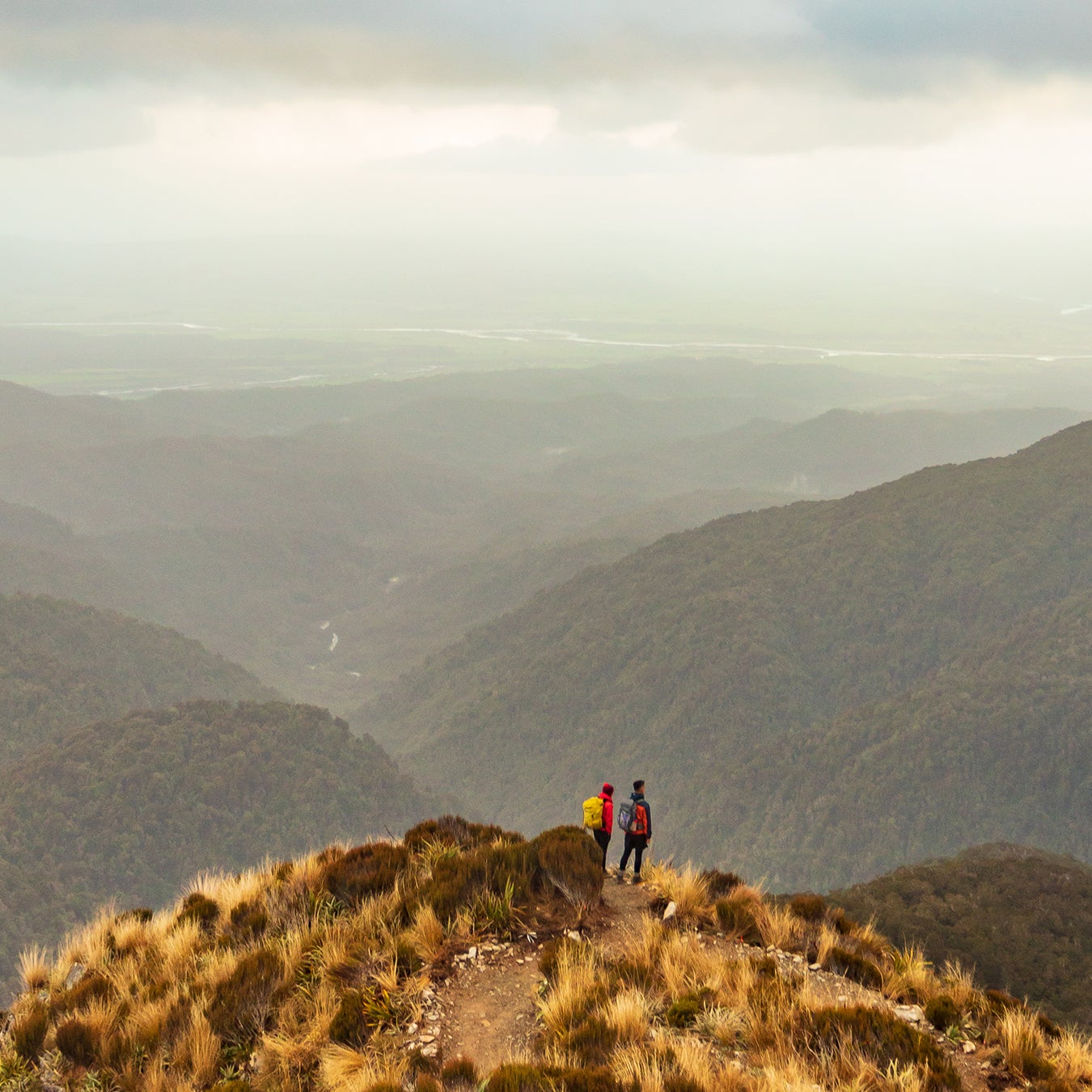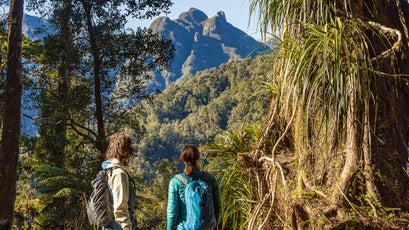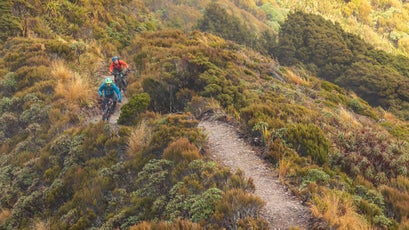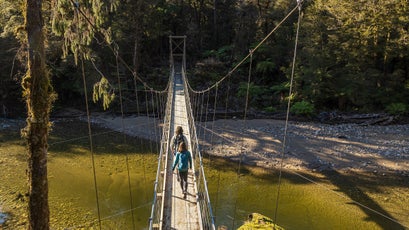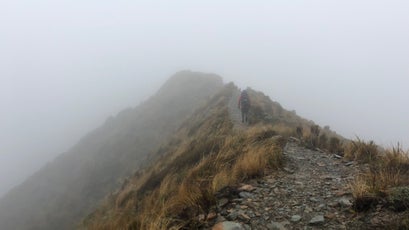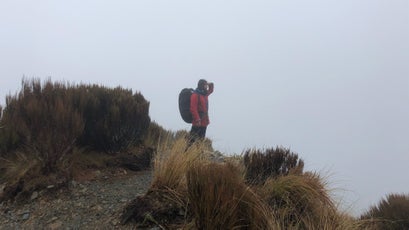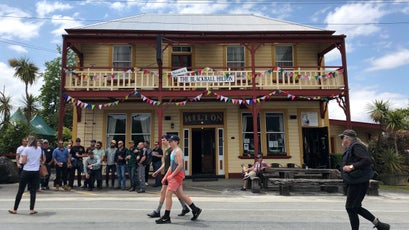New Zealand’s Great Walks are legendary in the backcountry world. Since launching in 1993 to protect some of the country’s most beloved trails, the three-to-five-day treks have attracted millions of hikers, all eager to traverse the island nation’s iconic landscapes, from the s alpine passes on the South Island to the ’s active volcanic fields on the North Island. Many lie in remote, untouched corners. All are bucket-list worthy.
So when I heard about the —the first Great Walk to open in more than 25 years—I knew I had to be one of the first on it. It wasn’t just because of its novelty or the fact that it crosses the South Island’s pristine west-coast wilderness. It was because this trail is completely unlike its predecessors.
While the nine original Great Walks were based on existing trails, the 35-mile Paparoa is purpose-built, cutting southeast to northwest through difficult, previously inaccessible terrain in Paparoa National Park, from the inland town of Blackball to the coastal village Punakaiki. It’s also the first Great Walk designated for dual use by hikers and mountain bikers. Designed to be walked over three days (or ridden over two days), the track gently meanders upward��through rainforest to exposed ridges and past waterfalls, limestone caves, and relics of the area’s gold-mining past. On clear days, views stretch across alpine tussocks to the Tasman Sea.
Securing my spot wasn’t as simple as showing up, though. The Great Walks are some of the most popular backpacking trails (or tramps, as they’re known in Kiwi slang) in New Zealand. They’re easy to follow and little gear is needed, since hikers typically sleep in huts along the way, which come equipped with amenities like sleeping pads and stoves��and��are staffed by��rangers.��The Paparoa Track features three huts: the previously existing Ces Clarke Hut and the brand-new Moonlight Tops and Pororari��Huts. Some tracks allow trailside camping in designated sites;��on others, like the Paparoa, huts are mandatory��and must be reserved in advance. Typically, the booking system for huts and campsites opens in June for the summer season, which runs from November to April. Not unlike a Taylor Swift concert, spots for peak periods on the most in-demand tracks sell out .
So when I scored two of just 40 opening-day spots on the Paparoa, it wasn’t luck��but the result of reloading my browser every three seconds until the site opened at 9:30 A.M.
Then��all that was left to do was spend the next six months telling anyone who would listen that I’d scored a coveted first spot on the trail. But��there was one thing I didn’t account for: that the West Coast, which fully lives up to its , might have other plans.
Although the Paparoa Track can be hiked in either direction, the suggested starting point is Blackball, a small inland village of 300 about 15 miles northeast of Greymouth, the West Coast’s largest city. Its main drag is lined with historic mining cottages in various states of disrepair,��physical specters of the last 130 years of booms and busts. Since the late 1800s, the residents of Blackball have played witness to countless promises of improved economic prosperity. The Paparoa Track is the latest.
The Great Walks are an identifiable brand that’s put some of the country’s most remote areas straight on to . Every year��around 110,000 hikers, more than half of which are international arrivals, complete one of the walks. For communities that might not otherwise be on the map, it’s a lucrative industry. The average international hiking tourist vacations longer—more than twice as many trampers stay for at least 20 nights��compared to non-hiking international visitors—and spends nearly on accommodation, food, and services. In some regions, this has equated to millions in tourism dollars; it’s estimated that the most famous Great Walk, the Milford Track, generates $13.2 million for .
Blackball is already showing signs of what’s to come. There are new public toilets, five different transfer services that deliver walkers from nearby Greymouth or Punakaiki (where there are more accommodation options) to the start of the track, and, for the first time ever, Airbnbs. However, for the residents of the area, it’s impossible to talk about this latest economic promise without thinking of the last one��11 years earlier. When the Pike River coal mine opened in near Blackball in 2008, it was predicted to bring in around $112 million annually. But only two years later,��explosions in its shaft left 29 men dead and 114 without jobs. In the years that followed, more than 1,000 additional people lost jobs��due to falling coal prices.
For the families of the 29 men, the tragedy was only further incentive to find a sustainable alternative to mining. Inspired by the nearby cycling area—which��after opening five years ago, now sees��10,000 visitors per year—the families proposed building a track in Paparoa National Park in 2015. The park’s proximity to the Pike River mine meant that there could also be a side trail to a memorial at the disaster site.
The clincher was making it a Great Walk. The designation comes with a marketing push from Tourism New Zealand��and would help firmly establish the region as more than just a pit stop on the way��to the Fox and Franz Josef Glaciers, two of the South Island’s biggest attractions. For the first time in the region’s history, it would be a way to capitalize on the area’s natural resources without exploiting them.
But building a trail��through the mountainous terrain wouldn’t be easy. The Paparoa range sits directly in the pathway of some of the South Island’s wildest weather. Part of the Southern Alps, the range is the first to receive strong westerly airstreams, resulting in up to 20 feet of rain per year.
For over two years, three teams of track builders—many of them former miners—weathered the wet and wild conditions. In 2018, ��Fehi and Gita hit with such force that even heavy machinery was tossed aside. The planned opening date of April 2019 was to September, then to December.
When I asked Mark Nelson, project manager of the Paparoa Track, if there were ever any concerns about the area’s suitability for a Great Walk, he didn’t pause before responding. “We always understood that the Paparoas have a really unusual weather pattern. Turning up on a bad day is about embracing where you are. The place changes—you get this magnificent smell of the moss and trees, and the cloud formations, creeks, and waterfalls come alive.” Despite the odds, the $8 million project was finally completed last��December.
“Kia ora,” the email read. “We are very sorry to inform you that due to a recent slip, you will not be able to walk the full track.” Slip. It’s the ever so polite word that Kiwis use to describe everything from a few fallen rocks to a catastrophic landslide. In this case, it was the latter. Just beyond the Moonlight Tops Hut, where I was booked to spend my first night, the path had been washed away, making the middle 11 miles of the track between the Moonlight Tops and Pororari��Huts impassable. Only two weeks before I was supposed to leave, my plans had literally come crashing down.
But after months of anticipation (and bragging), I wasn’t going to pass up the opportunity. Instead of conquering the trail over three days, I decided to spend a night at Moonlight Tops before retracing back to my starting point in Blackball. If I was lucky and the weather held out, I could then drive to Punakaiki, the town on the opposite end of the track, and do part of the last third��of the trail toward��Pororari��Hut in reverse.
The first day of the track is arguably the most difficult, with 12.5 miles to cover and 2,600 feet in elevation gain. I barely noticed the incline—instead, I was fixated on the call of tuis, one of New Zealand’s endemic birds, ringing through rainforest and the way the mist gently caressed��the tops of the nikau palms. My friend Alexis, who had agreed to join me, and I crossed swinging bridges over rushing creeks, every surface dripping with electric green moss.
That all changed seven miles later��when we got above tree line. Exposed, we ducked into Ces Clarke, an already existing hut that had served a former trail, to shelter from an incoming storm. ���ϳԹ���, the wind screamed. We watched as five cyclists raced past. Having already been to the Moonlight Tops Hut, they didn’t bother to stop on their way back down.
We decided to continue on. At first��it was manageable. But then we turned a corner and the wind swirled, grabbing at us in unpredictable gusts. I clung to the closest tussock, rain pelting sideways at my face. Beneath me��the track turned into a creek bed. But because we were at an equidistant point in the six-mile slog, we pushed on.
Despite the rain—or perhaps because of it—there was a kind of sublime beauty to the Paparoas. Dozens of impromptu waterfalls rushed over the track’s edge. Although we couldn’t see the advertised views, there’s something transcendent about crossing narrow ridgelines and disappearing into fog. It felt adventurous, a quality that’s��hard to achieve on a path designed to be well-trodden.
Alexis and I were the first hikers to reach the brand-new Moonlight Tops Hut, where we started a fresh page in the shelter’s journal, our names inked proudly at the top.
The next morning, not able to go any farther due to the slip and not wanting to backtrack, we opted to return by way of the 13-mile Croesus Track. Previously, it was one of the park’s only trails and the pathway to the Ces Clarke Hut.
Like most of the trails in Paparoa National Park before the Great Walk was built, the Croesus is little more than vague goat tracks on the side of the mountain, accessible only to those with wilderness experience. We scrambled over loose rocks, eager to get down before the next storm arrived. At points��we lost the path, only picking it up again when we spotted an orange trail marker through the fog.
By the time we reached my car, I was barely able to stagger another step. We had timed it perfectly—the moment I put my key in the ignition, the heavens unleashed.
Looking back up at the mountaintops, I couldn’t help but feel somehow cheated. As much as I was ready to get down, part of me couldn’t wait to go back up.
I was determined to see the other end of the track, so five days later, my hiking boots still wet, I drove 150 miles south to Fox Glacier to wait out the wet weather and check out the glaciers. While the middle section of the Paparoa remains��closed, the part from Punakaiki is��open and reportedly stunning, taking hikers nine miles through the Pororari River’s gorge of limestone karst up to the Pororari��Hut. I planned to hike in a few hours to get a glimpse of the trail before turning around.
Overnight, the storm intensified. By morning, the power was out. Bleary-eyed, I trudged over to the front desk at the Bella Vista��motel, where I was staying.
“You might as well go back to bed,” the manager, Sue Bergquist, said. “There’s been slips on both the roads in and out—it might be days before they’re open again.” She delivered��the��news with the matter-of-fact authority of someone who has grown accustomed to a landscape where slips are a part of daily life.
The roads weren’t the only casualty of the weather. Repair work on the Paparoa Track has also been delayed. Now it’s estimated that the full walk won’t open until March, with the Pike 29 Memorial expected to open sometime later in the year. In order to return, which I’m eager to do,��I will have to be patient, a skill I’m getting better at since moving to New Zealand last year. Because in a place ruled by��nature, slips are merely a setback, not an end.


